Lawrence Cohen lays out the events precipitating and surrounding the epidemic proliferation of mucormycosis or “black fungus” in India, charting its pathophysiological, mediatic, and chromatic dimensions.
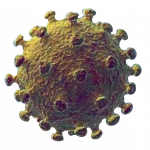
Figure 1: “Yellow Fungus Entry! Explained in Tamil,” Video posted June 1, 2021
Several weeks into the gathering mass death of what has been named India’s second COVID wave, a new and at times terrifying concern began to proliferate in conversation and across print, televisual, and social media. By late May of 2021, reports were circulating of the lethal infection mucormycosis—more popularly named “black fungus”— on the rise across the country. Expert knowledge clustered around three correlating factors that might explain who was vulnerable to fungal disease: (1) having a recent or persisting coronavirus infection, (2) having untreated or poorly treated diabetes, and (3) taking steroid treatments given to mitigate the severe effects of coronavirus infection.[i]
As if gratuitously amid the more general pandemic and both the intimate and public experience of loss for so many, an additional figure of biological virulence thus appeared. In color. Mucormycosis extended the structural violence of the pandemic, the exasperating failures of the governmental work of preparedness (Caduff 2015, Lakoff 2017) and prevention (Farmer 1996), failures most notable at the social margin. But the emergent reportage of mucormycosis differed from the broader field of reportage struggling to grasp the second wave overall. The respiratory distress associated with so much coronavirus illness did not lend itself to visual registers of horror in the ways that the distended faces, blood-red eyes, and blackened necrotizing skin of those with mucormycosis were suddenly doing. Prior to the emergence of black fungus, these visual registers were focused on the proliferation of the dead: queues of bodies at crematoria and cemeteries and masses of bodies floating in rivers, as if to die was to be seen. The figures of monstrous affliction that marked the publicity of black fungus collapsed this sensory partition between infection and death.

One might argue that despite the proliferation of corpses the dominant publicity of coronavirus pandemic in India was less focused on the affects of horror and the uncanny than of realism and the canny, inviting its addressee to trace economies of scarcity: of oxygen, drugs, clinical competence, hospital beds, and political responsibility. For those analysts of the political scene who located the massive regard for the Prime Minister Narendra Modi in the realm of the populist and phantasmic, the pandemic offered a (dearly-won) promise of a belated return to realism against the spell of the Leader’s magic. In this sense the piling up of bodies far from an uncanny scene was an exact metric of political failure.
Yet black fungus, in opening the living to the register of the fleshly, pressed on the terms of such binary struggle, troubling the easy division of reason and economy set against magic and prodigal death that has defined much available critique.
This essay is offered to lay out some of the events and forms precipitating and surrounding the epidemic proliferation of fungus—pathophysiological, mediatic, and as we shall see, chromatic—and to begin to think with these. It is necessarily limited by its location within an unfolding account of virus, fungus, message, and world that shifts day by day, and it is limited by my own multiply orchestrated and advantaged sequestration.

Within weeks of black fungus’ public debut, the color of the matter began to shift. There was not only it suddenly seemed black fungus to worry about.
At first, there was “white fungus.” This sudden splitting of fungal threat into black and white was inevitably organized around a parallel splitting of life chances, though news sources and the doctors they chose to cite differed on whether white fungus was the more deadly of the two (TWC India Edit Team 2021) or the more mild (Press Trust of India 2021). Candida infection, familiar as thrush for those with memories of survival and loss from immune disorder in the AIDS pandemic, was the substantive basis for the coloration of white fungus, but news articles linking the new color wave to candida and to the knowledge of the AIDS clinic were few (Biswas 2021). White fungus as it was iteratively materialized (Butler 1993) was less a translation of candida than its own entity, amplified within the echo chamber of meme-driven “content journalism” as a floating signifier without species reference.[ii]
And soon, taking the situation beyond the historical echolalia of black and white, a third speciated color of fungal infection was discovered. B. P. S. Tyagi, an otolaryngologist in the city of Ghaziabad on the eastern periphery of Delhi, described a patient with not only black and white fungus but a third and potentially even more lethal “yellow fungus.” Notably, the species referent was absent from most reportage, as if yellow fungus as such had long inhabited the atlases of clinical mycosis. Indeed yellow fungus, Tyagi claimed, had hitherto only been found in lizards (ABP News Bureau 2021).
Tyagi was not a stranger to translating patient care into clinical publicity: the ENT hospital where he works proudly advertises his ascension into the Limca Book of Records, an India-based version of the Guinness Book (and owned by the Coca-Cola Company, no less globally instantiated than the Guinness brand). Tyagi’s 2015 achievement was conducting more ear drum surgeries quickly in sequence than any other ENT surgeon recorded worldwide (Harsh ENT Hospital n.d.), a feat he followed up by a second record-breaking effort of surgeries conducted in a local prison.[iii]
These details—the local prestige of a Limca Book citation for private surgery, the Taylorist innovation of surgical technique on captive bodies—are not unfamiliar features of a clinical landscape. The circuit structure of the colonial Indian Medical Service and the cyclical time of agrarian labor often constrained the available space and time of surgical intervention, its chronotope if you will, creating a demand for quick surgeries that could be repeated to treat groups of patients: this imperative is particularly notable in the case of cataract surgery in the late 19th century, constituting a sort of Fordism and Taylorism avant la lettre. With the emergence of 20th-century eugenics, it provided a bureaucratic and technical assemblage for imagining a mass body, one scaled up with the development of the form of the surgical camp for sterilizations (see Cohen 2011). The enfolding of the surgical camp into the record book, the latter an important site for world-historical belonging in a postcolonial situation,[iv] grounds the expert morality of the clinician of the mass.
What is notable is less Dr. Tyagi’s ongoing ability to craft clinical publicity but the ways his framing of clinical innovation via an accessible pedagogy of color comprehends and exemplifies the emergent and self-referential logic of amplificatory facticity. Fungal colors do not for the most part refer to clinical reason or its mycological archive. They refer to themselves in establishing what we might term their species realness.
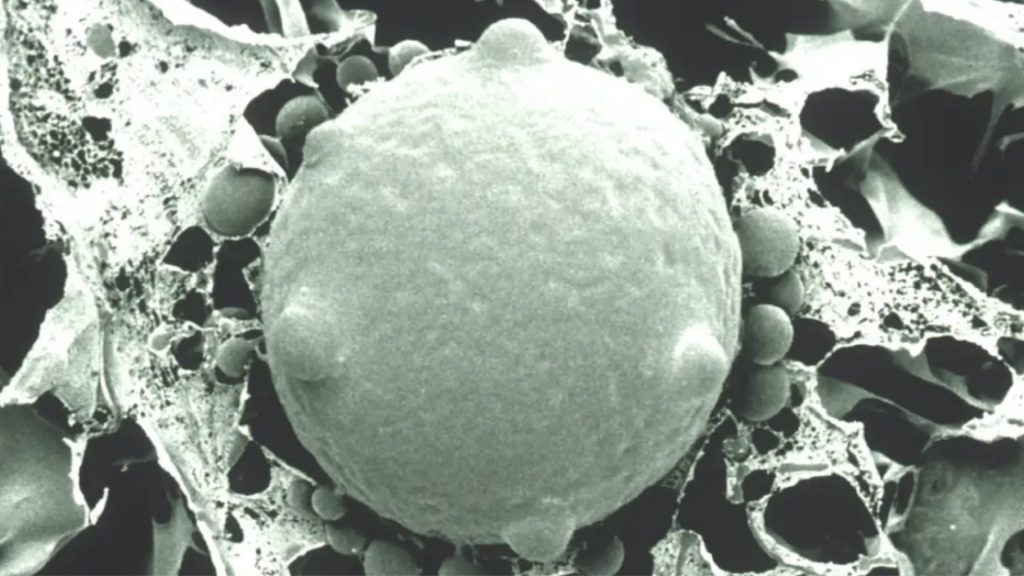
In making a claim for not only yellow fungus’s urgency and realness but its distinctiveness from black and white, Tyagi—according to the intensive publicity that followed his latest feat drew upon the language and morality of hygiene. Yellow fungus may emerge, it appeared, in situations marked by inadequate hygiene.[v] The claim expanded on familiar knowledge: mold and other fungal infestation as widely experienced materialities of rot might seem to reflect an obvious failure of adequate cleanliness, whether in clinic, home, or other spaces of imaginable contagion. Hygiene as a figure drew upon a complex and caste-racialized polysemy of pollution, but it also offered the possibility of a localized practice of care that offered direction and hope in the face of the state’s failure, and indeed that offered majoritarian ideological comfort supplementing the ruling party in its echoing of the Prime Minister’s own focus on national hygiene with the Swachh Bharat campaign.

Within days of the emergence of these three highly publicized waves of lethal color, physician-bureaucrats associated with traditionally more prestigious and nationally ranked medical centers like Delhi’s All-India Institute of Medical Sciences (AIIMS) were quoted in conventional news media troubling the indexicality of yellow, white, and black, the referential accuracy that is of the links implied by Tyagi and others between a given color, a single class of fungus, a particular part or system of the body, and a particular ethic of prevention such as hygiene. AIIMS’s Director Randeep Guleria in calling for greater caution in the face of chromatic nosology evoked popular confusion and the need for a counter-pedagogy to that of the virtual news cycle.
Guleria, speaking at the government’s COVID briefing, said ‘many terms’ were being used for fungal infections in COVID patients and these could be misleading and could create confusion. “Naming the same fungus based on its colours, depending on the area of infection, creates confusion” (Prabhu 2021).
A particular concern of expert counter-publicity was the claim attributed to Tyagi and others of poor hygiene as the cause of some fungal infections. The varied fungal species infecting persons after COVID-infection were ubiquitous and not restricted to dirty places or people: thus at stake in prevention were the causes of reduced immunocompetency, as opposed to institutional or personal cleanliness. The chromatic distinctions at play were distractions: what mattered was the management of conditions like diabetes and the rationalized prescription of steroids.
But at the same time as official medicine counseled chromatic caution, some elite private hospital groups began to include signs of the new colored fungi in publicizing their own COVID and ancillary services on the Internet. Thus European-based Medicover Group, building its Indian clinical markets, jumped on the bandwagon with yellow fungus clickbait with a hyperlink to an information page reproducing Dr. Tyagi’s claims for yellow fungus without apparent due diligence.


Histologically, the tripartite black-white-yellow distinction if one takes the colors as referring to microbiological agents implies three distinct fungal groups or species: black fungus to the mucoromycetes, white fungus to candida (or aspergillus, or both), and yellow fungus at times to Mucor septicus. Against expert counter-publicity diminishing the etiological importance of color per se, though the publicists of COVID polychromatism usually used color self-referentially at times their clickbait was supplemented with species terminology forming a more robust classificatory grid making color matter more. As this grid took hold of the fungal edge of pandemic publicity in June of 2021, the discovery of yet another fungal species in infected and necrotic tissues of immunocompromised persons with some combination of the three risk factors (prior COVID infection, steroid treatment for COVID symptoms, or uncontrolled diabetes) was given species realness by providing the infective agent with a new color designation. A fourth presumptive wave was publicized as green fungus and linked to aspergillus infections among media that had not already assigned aspergillus to white (Dutta 2021).
Though aspergillus is of epidemiological concern, this fourth wave has as of this writing not yet caught: hindsight may reveal if this failure reveals something about the shifting conditions of self-reference or the work needed to constitute a given color’s amplificatory and affective potential (purifying white from its blurred reference to two fungal families, perhaps, in order to brand green). One can for now attend to the efforts. Thus, as the Delta variant associated with India’s second coronavirus wave emerged as a transnational threat promising further waves of sickness and death elsewhere, the Murdoch family’s News Corporation used a report of aspergillus infection in New York State to package the new “green fungus” as an ontological framing of India’s global threat on its tabloid Sun platform (Williams 2021). Perhaps at issue was that to the extent the publicity of green fungus linked it explicitly to the Delta variant the new color was reduced to a viral effect, that is to a metonymic feature of the relatively well-demarcated terrain of coronavirus variants and not to the fleshly, uncanny, and wondrous domain of the colors of rot.

The publicity of fungus in India shares many features of other COVID reportage nationally and internationally: a cacophony of advice, of rumor, and of scapegoating amid uncertainty; the brutality and routinization of symptoms; illiberal cults of the leader calling public health expertise into question, but not uniformly; the formation of an ameliorative, liberal and scientific pedagogy aimed toward a subaltern public imagined as medically illiterate and easily deluded.

I’ve suggested that this overall assemblage took on a more visual, grotesque quality with the emergence of black fungus. A common site of mucor infection comprises the sinuses and orbital region of the head, with necrotizing spread to the brain and other organs. Monstrously polychromatic images of reddened, puffy eyes and of fungally blackened and disfigured, literally rotting faces quickly circulated, producing an effect of horror. These images were supplemented by eviscerating narratives, notably of the frightening necessity in multiple cases of “orbital exenteration,” cutting out the eyeball entirely from its socket to limit fungal spread and tissue necrosis. The first acquaintance who early in May of 2021 alerted me to the emergence of mucormycosis and the other colors was quite graphic in describing what he had heard from family in India about exenteration. It was gross. I approached my own friends struggling with COVID sickness, and their friends and family, more cautiously, concerned that they might be overprescribed steroids and at risk for fungal infection. But the black fungus stories within my own relatively elite network were inevitably of others, persons with poorly treated diabetes, in several cases domestic workers in their relation to my academic friends.

The arrival of fungal morbidities and their polychromatism leads me to some modest, perhaps all too obvious lines of thought: on etiology and the nature of pandemic economy, on pedagogy and publicity, and on waves and color. I am mindful that these lines of thought cannot be adequate to the demands that acknowledging the structural violence of differential pandemic mortality and morbidity calls forth.

Etiology: the escalation of deaths from fungal infection is but the latest of multiple co-morbidities that coronavirus infection would appear to unleash. At present, the virulent specificity of the Delta variant itself does not appear a sufficient explanation for the concentration of fungal disease in India and not elsewhere. Before COVID, India already perplexed mycologists for its differential burden of mucormycosis: part of the assemblage of contingent factors at stake appeared to be the high prevalence of untreated and poorly treated diabetes. This prevalence may itself be the effect of a historical assemblage of ecologies and economies of and attachments to food, engendering a variable “absorption” of illness in the terms of the metabolic analysis that the anthropologist Harris Solomon (2016) has pioneered, and in relation to what one may need to frame as the state’s and the expert’s gross failure of metabolic care.
The question of steroid overprescription within the tripartite understanding of fungal infection that marks the expert counter-publicity of color—diabetes, COVID, steroids—opens to a second set of etiologic concerns. Steroid treatment though a rationalized standard of care emerges within an “unprepared” material and affective economy of scarcity in which forms of available care are rare and precious and carry charisma accordingly. The other notable forms of care in this economy, oxygen, hospital beds, and the antiviral agent remdesivir, emerged as nearly impossible to acquire in the face of intensely high demand amplified by fearful affect. The value of these forms of care in such an economy is massively augmented. In the case of remdesivir, for which compelling evidence of effectiveness is to say the least lacking, the emergent referential disconnect between ameliorative evidence and desirability is particularly notable. In the case of hospital beds, I think of many anecdotes currently circulating across my networks in which the shortage of beds generates their high value, a value that families and other care groups struggle to comprehend given contradictory concerns that also circulate of nosocomial and other hospital-based infections and morbidities.
In the case of steroids, the current debate about their overprescription as a critical factor behind the wave of fungal infection may similarly reflect a tension between inflationary value and the rationalization of care, creating unprecedented numbers of bodies as biological milieus for necrotizing fungal growth. The inflationary value of steroids and the fungal epidemics following on COVID’s second wave are to a significant measure the effect of the state’s lethal unpreparedness. The condition of unpreparedness, it should be noted, cannot be framed as a unique symptom of the government of Narendra Modi, reflecting as it does a far longer duration of the state’s disinclination to “make live,” if one intensified by a shifting relation globally between right populism and expert topographies of evidence.

Waves and color: I have not attempted a cultural or semiotic analysis of the colors of rot. Such a move might be productive but I am cautious. Colors like many other contemporary mediatic phenomena may evade the calculable rationality (Guyer 2008) of reasoned preparedness and prevention through what I have been framing as their self-referentiality under conditions of amplified address. Put simply: the colors of fungus as these are being deployed may not point toward a given class of microorganisms or some cultural schema of color (such as the presumptions of caste, gender, and race), that is toward the contested rationalities of medicine or of the social, but toward nothing more than themselves.
Take white fungus. White fungus can, given the variable exigencies of the pedagogy of the confused, refer to candida. Or any fungal infection besides mucormycosis (thus the arguable “confusion” with aspergillus). Or we might find in its usage historical and cultural predicates conveying claims about purity, racial supremacy, death, or caste and gendered hierarchies of value. But as a clinical finding (of other fungal infections besides mucormycosis in persons recovering from COVID) becomes a color wave, its publicity pulls away from such reference. Fragments of clinical knowledge involving either candida or aspergillus get entangled as they move from report to report across an array of competing, aspiring, and variously ideologically committed content providers, or their robot prostheses. Pictures of white fungus, “representational images” using image filters to convey the visual truth of speciated waves of rot, proliferate. White fungus refers to itself in a way that pulls us away from grids of its worldly referentiality, proper and AIIMS-vetted or not.
Black fungus, the original and still primary epidemiological concern, differs somewhat. One might note, in the spirit of a structuralist analysis, some organizing distinctions. Colors divide as to whether they refer only to the presumptive color of a fungal species (white, yellow, green) or both to the presumptive color of fungus and to the color of the necrotic flesh it has consumed (black fungus). Notably, the publicists of white and yellow often noted that these were “internal” infections, in this context without visible referent grounding color in fleshly suffering. What I have been terming self-reference emerges in a situation of multiplying colors in which the sight of suffering no longer secures what is at stake.
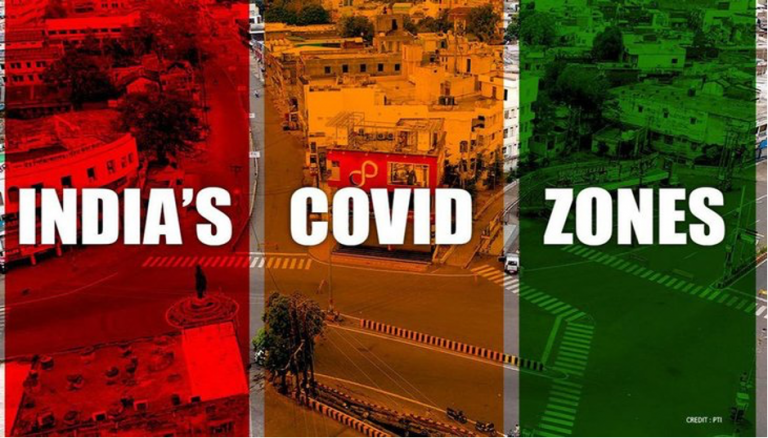
Color in the plural has been of course present throughout the months and now years of this pandemic as the mode of geospatial diagnosis and government. Colors differentiate zones of danger and risk on the map: the difference between colors may convey a moral topography. As in the United States, such color schemes are not necessarily uniform, generated by various levels of government and by news media and bearing the split imperative of restricting the mobility of bodies and enabling the mobility of commerce (Shendruk and Quito 2021). The dominant Indian scheme has been the traffic-light triad of red, yellow, and green, with orange at times substituting for yellow, extending from the government of districts as zones of variable containment (N. Sharma 2020), to the government of vehicular mobility (Mint Staff Writer 2021) and medical waste (Chatterjee 2020, Press Trust of India 2020). Color here is both laden with and distinct from particular orders of historical convention (see for example McShane 1999 on the global history of traffic light colors and Daniel 1987 on the Tamil semiotics of the color red). As the binary distinctions between “lockdown” versus “freedom,” and mass infection versus mass health, were augmented by subtler distinctions of population control, additional codes emerged like the government of Delhi’s quadripartite division of forms of labor, mobility, and risk into yellow, red, orange, and amber. Here colors offer the promise of a calculative rationality translated into official pedagogy, and of note they are represented as text. presuming the addressee knows how to see.

The second domain of pandemic multi-coloration that precedes the fungal turn is that of the visualization of coronavirus itself. The red and gray color dominant model of Alissa Eckert and Dan Higgins of the US CDC, “originally designed with the public in mind,” (Britt 2020), utilizes danger-zone red for the attaching spikes of the corona and an explicit if variably present caution that the colors are arbitrary representing not visualizable distinctions but conceptual differentiation of molecular function. The model has circulated widely across India, maintaining or transforming its color scheme, as in these much-reproduced images of a Chennai policeman dressed as the virus and a Kolkata seasonal puja display of the goddess destroying the corona demon. I would note that viral “color”—officially arbitrary and pedagogical—in these cases lends itself easily to meaning-laden amplification: the blood red of police action, the movie-monster green as an emerging convention of the demonic. Green is not a featured color of the demonic in 20th-century chromolithography, and I am hesitant to make genealogical claims for it. But viral green is emerging as a stable referent in a range of work under the sign of folk art, for example in the Madhubani painting of the Goddess defeating coronavirus by the artist Nisha Jha.
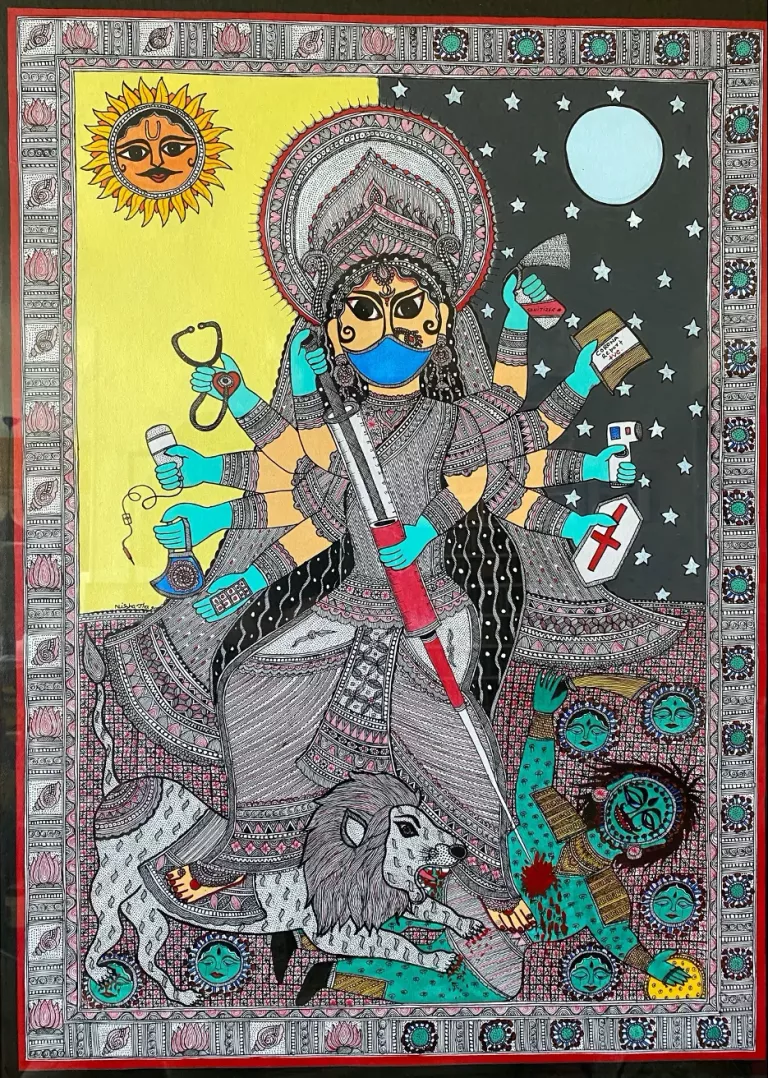
At the time of writing, virus and fungus inhabit the field of color quite distinctly. If fungal unlike viral color lacks a stable referent, whether virological, policiary, or devotional, it may still press on the stability of viral reference, pouring its own fungal color into the now familiar form of the CDC coronavirus model. Thus, note one last “representational image” of yellow fungus in the familiar coronavirus shape, from memes that intensively circulated across news items and social media with the yellow color wave.
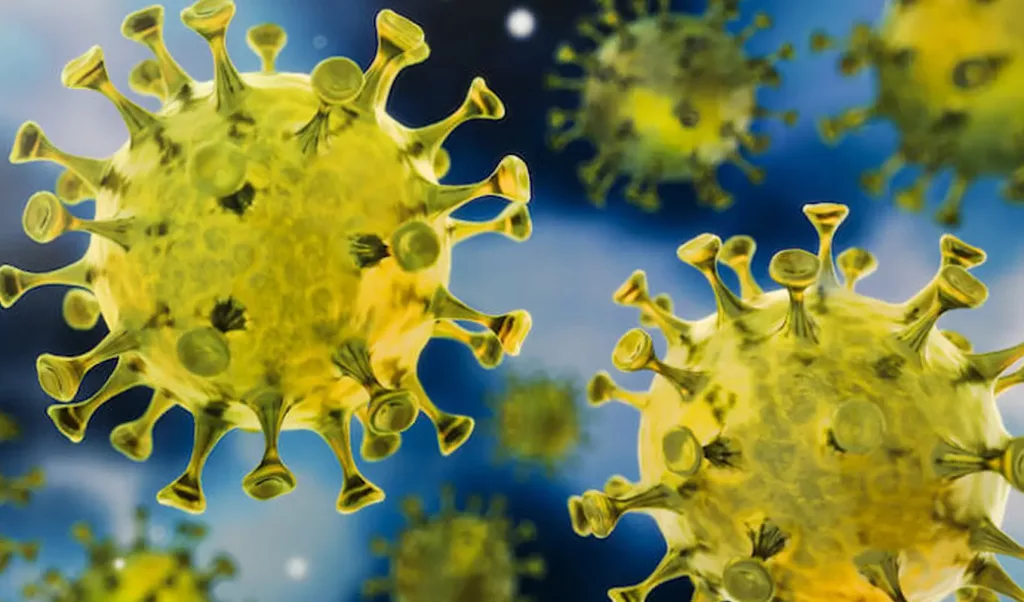

I began this essay with the claim that the publicity of black fungus amplified the visual and embodied horror of an unexpected supplement to the criminality of state abandonment and mass death, almost as if the blackened faces and blood-filled eyes of mucormycosis materialized upon its victims the violation borne and rationalized via the visualizable metrics and affect of mass death. My sense has been that the centrality of living flesh to the experienced rottenness of things at stake in the wake of mucormycosis goes beyond the insistent realism of dominant political critique and its pressing on Modi-love as a sort of confusion that might be relieved by the press of pandemic death. The emergence of multiple colors of rot indeed places into question the primacy of externalized and accountable rot.
Fungal publicity, as in the case of its (contested) commitment to poor hygiene as a cause of some of the colored fungal waves, may of course supplement the dominant biography of India’s Prime Minister as the master of hygienic will. But it also gestures to a language for living and imagining distinction within the rotten world, one not based on the claims of reason set against the illusion of phenomenal engagement as the latter enacts and troubles the abyssal margin.

Acknowledgments: I am grateful to Bishnupriya Ghosh for the provocation leading to this essay and for substantive suggestions throughout, to Punam Zutshi for careful reflection on the emergent fungal turn, and to Lisa Brooks for discussion.
[i]The correlation with untreated and poorly treated diabetes had been noted before the pandemic cases (Chakrabarti and Singh 2014, Prakash and Chakrabarti 2021). Reports of mucormycosis as co-morbid with coronavirus infection in India continue to emerge and affirm the possible link with both diabetes and the immunosuppressive effects of steroid treatments (Garg 2021, Maini et al 2021, S. Sharma et al 2021).
[ii] The disconnect from AIDS could be said to press against if not erase the memory of such prior (and ongoing) loss. To the extent the by now slender distinction between journalist and algorithm collapses in the forms of reportage that pandemic sequestration invites, one could say that the public of this emergent discourse is constituted as of it had no capacity to grieve, as if AIDS were not grievable (Butler 2016) in India. One should note that the non-grievability of persons lost to AIDS is far from limited to India and indeed marks the erasure of persons on the social margin in my own city of San Francisco (Roebuck 2013) despite its amplified history of AIDS grief.
[iii] For the online version of the first record see https://www.coca-colaindia.com/stories/most-ear-drum-operations-for-free, downloaded June 28. 2021.
[iv] See Lal 2003 on the national attachment to Guinness generally and Copeman 2009 for a discussion of medical spectacle. (For a related example of what I am calling the enfolding of normative clinical forms, civic virtue, and Guinness Book-style spectacle, also involving Tyagi’s feat, see the conference reported in Singh 2019.) Extending Copeman’s reading of medical spectacle as religious experience, one might argue that the post-colonial attachment to a world-conquering form of Indian expertise in the Guinness and Limca books participates in a contemporary religious technics of wonder as discussed by Srinivas 2018: which opens to the possibility of the color waves of fungus being considered as inverse species of the wonderful.
[v] For example, the algorithm-driven news site Editorji noted in citing Tyagi that “it is believed that poor hygiene standards or consumption of unhygienic food causes yellow fungus infection” (Editorji News Desk 2021).

ABP News Bureau
2021 “Yellow Fungus: Far More Deadlier Than Black & White Fungi: Know All About It.” 24 May. https://news.abplive.com/news/india/yellow-fungus-detected-more-dangerous-than-black-white-fungus-found-india-know-symptoms-cases-precautions-1459911, downloaded June 28, 2021.
Biswas, Soutik
2021 “‘White fungus’: Drug-resistant Fungal Infections Pose Threat to India Patients.” BBC News, June 1. https://www.bbc.com/news/world-asia-india-57312832, downloaded June 28, 2021.
Britt, Robert Roy
2020 “What the Coronavirus Image You’ve Seen a Million Times Really Shows.” Elemental, March 13. https://elemental.medium.com/what-the-coronavirus-image-youve-seen-a-million-times-really-shows-3d8de7e3eb1f, downloaded June 28, 2021.
Butler, Judith
1993 Bodies That Matter: On the Discursive Limits of “Sex.” London: Routledge.
2016 Frames of War: When Is Life Grievable? London: Verso.
Caduff, Carlo
2015 The Pandemic Perhaps Dramatic Events in a Public Culture of Danger. Berkeley: University of California Press.
Chakrabarti, Arunaloke and Rachna Singh
2014 “Mucormycosis in India: Unique Features.” Mycoses 57 (Supplement 3): 85-90. doi:10.1111/myc.12243.
Chatterjee, Badri
2020 “Yellow: The Colour for All COVID-19 Waste.” Hindustan Times. March 20. https://www.hindustantimes.com/mumbai-news/yellow-the-colour-for-all-COVID-19-waste/story-Kaa2nXirxRcAcPP0CKEGiN.html, downloaded June 28, 2021.
Cohen, Lawrence
2010 ““Ethical Publicity,” in Anand Pandian and Daud Ali, eds., Ethical Life in South Asia. Bloomington: Indiana University Press.
2011 “Accusations of Illiteracy and the Medicine of the Organ.” Social Research 78 (1): 123-142.
Copeman, Jacob
2009 Veins of Devotion: Blood Donation and Religious Experience in North India. Piscataway: Rutgers University Press.
Copeman, Jacob and Deepa S. Reddy
2012 “The Didactic Death: Publicity, Instruction, and Body Donation.” Hau 2 (2): 59-83. https://doi.org/10.14318/hau2.2.005, downloaded June 28, 2021.
Daniel, E. Valentine
1987 Fluid Signs: Being a Person the Tamil Way. Berkeley: University of California Press.
DNA Web Team
2020 “Goddess Killing Coronavirus: Shashi Tharoor All Praises for COVID-19 Themed Durga Idol.” DNA India. October 20. https://www.dnaindia.com/india/report-goddess-killing-coronavirus-shashi-tharoor-all-praises-for-COVID-19-themed-durga-idol-2851029, downloaded June 28, 2021.
Dutta, Sreeja
2021 “Green Fungus or Aspergillosis and COVID-19 Infection.” medindia.net. https://www.medindia.net/patientinfo/green-fungus.htm, downloaded June 28, 2021.
Editorji News Desk
2021 “Is Yellow Fungus More Dangerous?: Causes, Symptoms and Treatment.” May 25. https://www.editorji.com/story/is-yellow-fungus-more-dangerous-causes-symptoms-and-treatment-1621887632081, downloaded June 28, 2021.
Farmer, Paul
1996 “Social Inequalities and Emerging Infectious Diseases.” Emerging Infectious Diseases 2 (4). doi: 10.3201/eid0204.960402.
Ferguson, James
1990 The Anti-Politics Machine: “Development,” Depoliticization, and Bureaucratic Power in Lesotho. Cambridge: Cambridge University Press.
Garg, Deepak, Valliappan Muthu, Inderpaul Singh Sehgal, Raja Ramachandran, Harsimran Kaur, Ashish Bhalla, Goverdhan D. Puri, Arunaloke Chakrabarti, and Ritesh Agarwal
2021 “Coronavirus Disease (COVID-19) Associated Mucormycosis (CAM): Case Report and Systematic Review of Literature.” Mycopathologia 186: 289–298. https://doi.org/10.1007/s11046-021-00528-2.
Ghosh, Bishnupriya
2011 Global Icons: Apertures to the Popular. Durham: Duke University Press.
Government of India [@MyGovIndia]
2020 “Rajesh Babu, a police officer, wearing a helmet depicting coronavirus, requests a commuter to stay at home during a 21-day nationwide lockdown to limit the spreading of coronavirus disease (COVID-19), in Chennai, India, March 28, 2020.” Twitter, 29 March, https://twitter.com/mygovindia/status/1244249671389732864, downloaded June 28, 2021.
Gupta, Charu
2000 Sexuality, Obscenity and Community: Women, Muslims and the Hindu Public in Colonial India. New Delhi: Permanent Black.
Guyer, Jane2008 “Prophecy and the Near Future: Thoughts on Macroeconomic, Evangelical, and Punctuated Time.” American Ethnologist 34 (3): 409-421.
Hansen, Thomas Blom
1999 The Saffron Wave: Democracy and Hindu Nationalism in Modern India. Princeton: Princeton University Press.
Harin
2020 “Amazon, Flipkart To Start Deliver Non-Essential Goods from May 4th.” MobyGeek.com. April 30. https://mobygeek.com/ict-news/amazon-flipkart-to-start-deliver-non-essential-goods-from-may-4th-13383, downloaded June 28, 2021.
Harsh ENT Hospital
n.d. “Our Doctors: Dr. B.P.S. Tyagi.” http://harshpolyclinics.com/our-doctors/dr-bps-tyagi/, downloaded June 28, 2021.
Lakoff, Andrew
2017 Unprepared: Global Health in a Time of Emergency. Oakland: University of California Press.
Lal, Vinay
2003 Of Cricket, Guinness and Gandhi: Essays on Indian History and Culture. Calcutta: Seagull.
McShane, Clay
1999 “The Origins and Globalization of Traffic Control Signals.” Journal of Urban History 25 (3): 379-404.
Maini, Aastha, Gaurav Tomar, Deepak Khanna, Yogesh Kini, Hardik Mehta, and V. Bhagyasree
2021 “Sino-orbital Mucormycosis in a COVID-19 Patient: A Case Report.” International Journal of Surgery Case Reports. https://doi.org/10.1016/j.ijscr.2021.105957.
Mint Staff Writer
2021 “Colour-coded stickers on Mumbai Vehicles amid COVID-19 Curbs: 5 Things to Know.” Mint. April 18. https://www.livemint.com/news/india/colourcoded-stickers-on-mumbai-vehicles-amid-COVID-19-curbs-5-things-to-know-11618715488756.html, downloaded June 28, 2021.
Mitchell, Timothy
2002 Rule of Experts: Egypt, Techno-Politics, Modernity. Berkeley, CA: University of California Press.
Prakash, Hariprasath and Arunaloke Chakrabarti
2021 “Epidemiology of Mucormycosis in India.” Microorganisms 9, 523. https://doi.org/10.3390/ microorganisms9030523.
Press Trust of India
2020 “Double Layered Bags & Colour Coded Bins: Waste Management Guidelines for COVID-19 Patients.” The Print. April 21. https://theprint.in/india/double-layered-bags-colour-coded-bins-waste-management-guidelines-for-COVID-19-patients/405755/, downloaded June 28, 2021.
2021 “MP: White Fungus Case Reported in Jabalpur, Doctor Says It’s Common & Curable.” India Today. May 23. https://www.indiatoday.in/coronavirus-outbreak/story/mp-white-fungus-case-jabalpur-doctor-common-curable-1805842-2021-05-23, downloaded June 28, 2021.
Roebuck, Christopher
2013 “‘Workin’ It:’ Trans* Lives in the Age of Epidemic.” Ph.D. Dissertation, Department of Anthropology, University of California, Berkeley.
Roy, Sreshta
2021 “After Black and White, Now Yellow Fungus Reported in India.” The News Insight. May 24. https://enewsinsight.com/yellow-fungus-reported-in-india/, downloaded June 28, 2021.
Sengoopta, Chandak
2003 “‘Dr Steinach Coming to Make Old Young!’: Sex Glands, Vasectomy and the Quest for Rejuvenation in the Roaring Twenties.” Endeavor 27 (3): 122-126.
Sharma, Nidhi
2020 “Colour-Coding of Districts in Battle against COVID-19.” Economic Times. May 1. https://economictimes.indiatimes.com/news/politics-and-nation/colour-coding-of-districts-in-battle-against-COVID-19/articleshow/75416339.cms, downloaded June 28, 2021.
Sharma, S., S. Grover, S. Bhargava, S. Samdani, and T. Kataria
2021 “Post Coronavirus Disease Mucormycosis: A Deadly Addition to the Pandemic Spectrum.” Journal of Laryngology and Otology. https://doi.org/10.1017/S0022215121000992.
Shendruk, Amanda and Anne Quito
2021 “These Are the Colorful and Confusing COVID-19 Alerts Used around the World.” Quartz. April 23. https://qz.com/1996422/the-differences-between-color-coded-COVID-19-warnings-globally/, downloaded June 28, 2021.
Singh, S.P.
2019 “ENT Experts from across Nation Join 2-day Workshop at Harsh Hospital.” The Pioneer. April 8. https://www.dailypioneer.com/2019/state-editions/ent-experts-from-across-nation-join-2-day-workshop-at-harsh-hospital.html, downloaded June 28, 2021.
Solomon, Harris
2016 Metabolic Living: Food, Fat, and the Absorption of Illness in India. Durham: Duke University Press.
Srinivas, Tulasi
2018 The Cow in the Elevator: An Anthropology of Wonder. Durham: Duke University Press.
Tripathi, Pooja
2021 “तीसरी लहर में रंगों से तय होगी दिल्ली की चाल, तस्वीरों में जानिए कैसे काम करेगा कलर कोड.” अमर उजाला. July 10. https://www.amarujala.com/photo-gallery/delhi-ncr/coronavirus-color-code-will-decide-lockdown-and-unlock-in-delhi-ddma-makes-solid-plan-to-fight-third-wave-know-how-color-code-will-work?pageId=10, downloaded June 28, 2021.
TWC India Edit Team
2021 “COVID-19 India FAQs: What is White Fungus, Who It Can Infect, How It Can Be Treated and More.” The Weather Channel India, May 21. https://weather.com/en-IN/india/coronavirus/news/2021-05-21-COVID-19-india-faqs-what-is-white-fungus-who-it-can-infect-how-it, downloaded June 28, 2021.
Uberoi, J.P.S.
1984 The Other Mind of Europe: Goethe as a Scientist. New Delhi: Oxford University Press.
Williams, Terri-Ann
2021 “Green-eyed Monster: ‘Green Fungus’ Linked to Delta Variant ‘Triples Risk of Death’, Scientists Warn.” U.S. Sun, June 24. https://www.the-sun.com/news/3150003/green-fungus-delta-variant-triples-risk-death/, downloaded June 28, 2021.

If you are interested in submitting an essay, video, work of photography, or other creative work to the First Looks series, please contact Bishnupriya Ghosh and Michael Berry at: [email protected] and [email protected]
© 2024 positions editorial collective. all rights reserved.